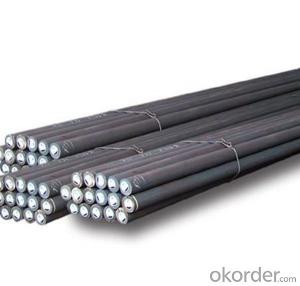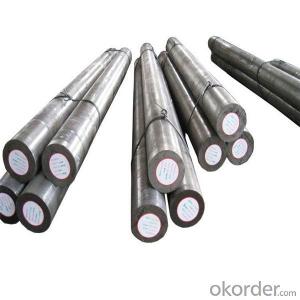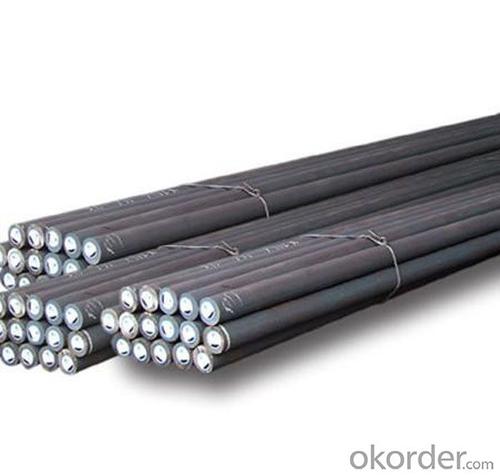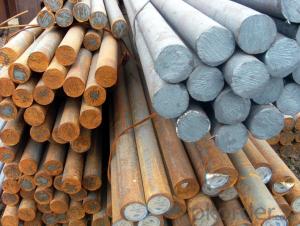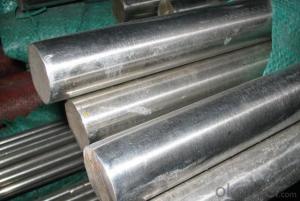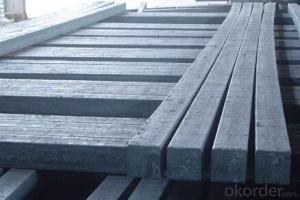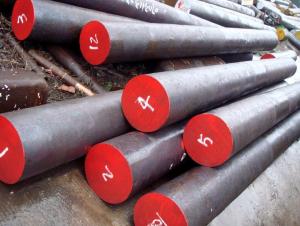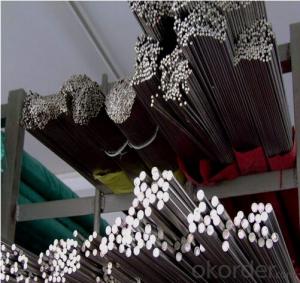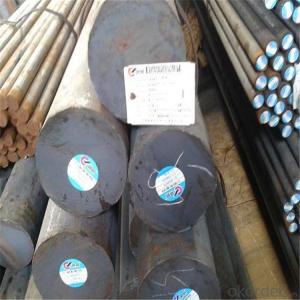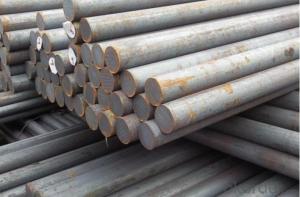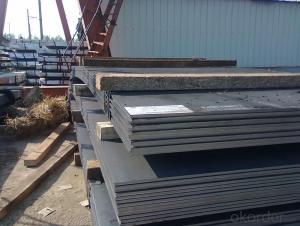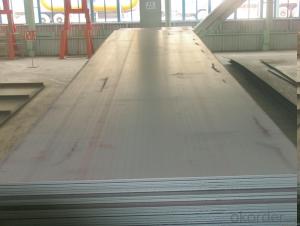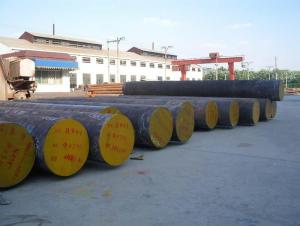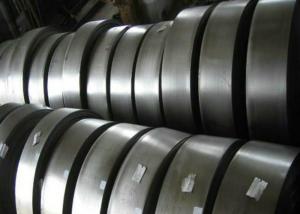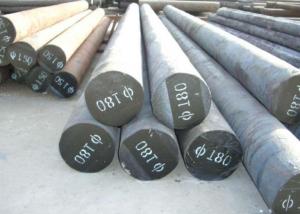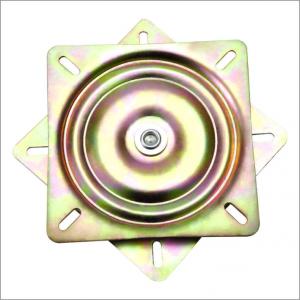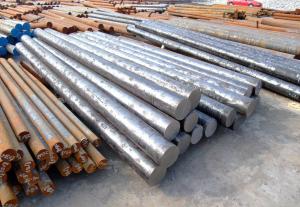Special Steel GCr15 Cold Work Die Steel Steel Bar
- Loading Port:
- China main port
- Payment Terms:
- TT or LC
- Min Order Qty:
- 25 m.t.
- Supply Capability:
- 10000 m.t./month
OKorder Service Pledge
OKorder Financial Service
You Might Also Like
Specification
Special Steel GCr15 Cold Work Die Steel Steel Bar
Product Description:
1. Production Standards: GB, AISI, ASTM, SAE, EN, BS, DIN, JIS
2. Smelt Iron -EAF smelt Billet - ESR smelt Billet -Hot rolled or forged steel round bar and plate
3. Heat treatment: Normalized / Annealed / Quenched+Tempered
4. Quality assurance: All orders received; Third party inspections including SGS, BV, and others test company test and inspect our products before shipping
Product Specifications:
Chemical Composition(GB)%
C | Si | Mn | Cr | Cu | S |
0.95-1.05 | 0.15-0.35 | 0.25-0.45 | 1.4-1.65 | ≤0.20 | ≤0.020 |
Heat Treatment
Item | Temperature ℃ | Hardness |
Anneal | 790-810 | 170-207HB |
Quenching | 830-860 | 62-66HRC |
Tempering | 150-180 | 61-66HRC |
Product Applications:
Used to make the load of the larger small cross-section conditioning and stress smaller large parts
Product Details:
Plastic Mould Steel
DIN 1.2311,1.2738,1.2083,1.2316 etc.
AISI P20,P20+Ni,420 etc.
JIS SUS420J2
Hot Work Steel
DIN 1.2344,1.2343,1.2367,1.2365,1.2581,1.2713 etc.
AISI H13,H11,H10,H21, etc.
JIS SKD61,SKD6,SKD5,SKT4 etc.
Cold Work Steel
DIN 1.2739, 1.2601, 1.2080, 1.2436, 1.2631, 1.263, 1.2510, 1.2327 etc.
AISI D2, D5, D3, D6, A8, A2, O1 etc.
JIS SKD10, SKD11, SKD1, SKS3 etc.
High Speed Steel
DIN 1.3343, 1.3243, 1.3247, 1.3355 etc.
AISI M2, M35, M42, T1 etc.
JIS SKH51, SKH35, SKH59, SKH2 etc.
Alloy Structural Steel
DIN 1.7035,1.6511,1.7220,1.7225 etc.
AISI 5140, 4340, 4135, 4140 etc.
JIS SCr440,SNCM439,SCM435,SCM440 etc.
Stainless & Carbon Steel or Others
DIN 1.4125,1.1191 etc
AISI 440C,1045, 1020 etc.
JIS SUS440C,S45C etc
Product show
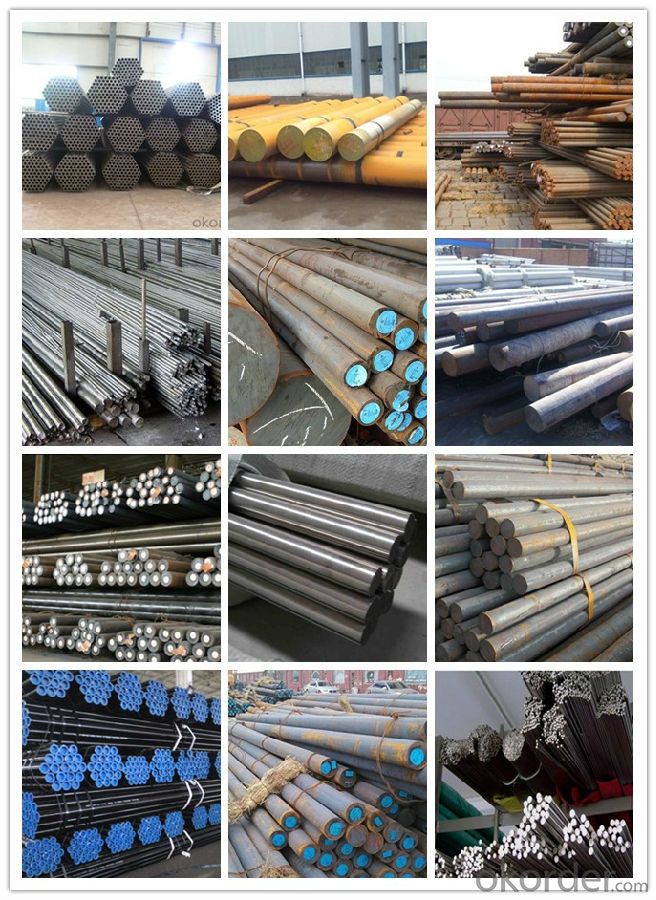
Workshop show
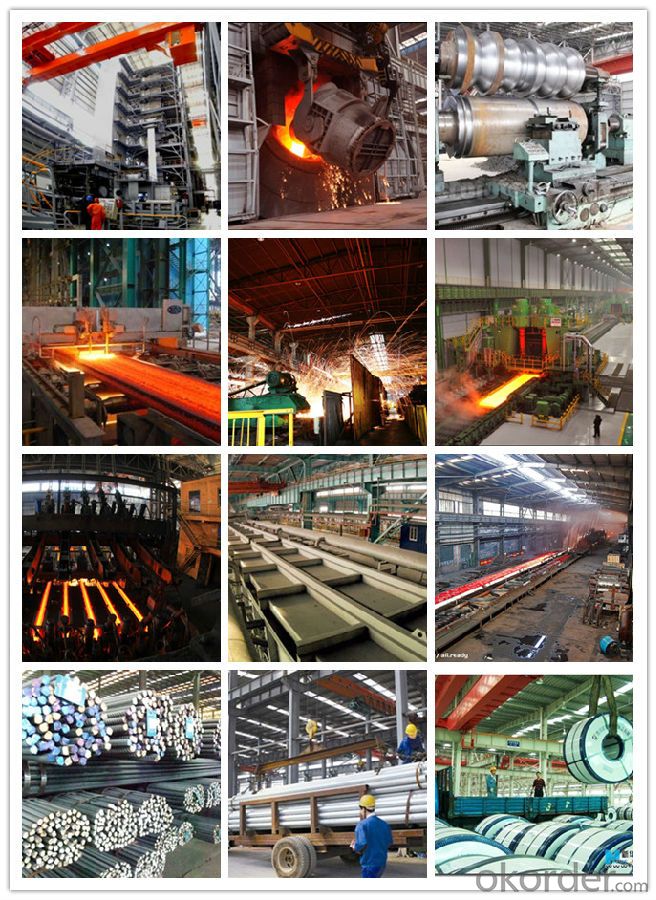
- Q: Can special steel be used for making cutting tools?
- Yes, special steel can be used for making cutting tools. Special steel alloys, such as tool steel, are specifically designed and manufactured to possess excellent wear resistance, hardness, toughness, and high temperature stability, making them ideal for producing cutting tools. These cutting tools include saw blades, drills, milling cutters, knives, and other sharp-edged instruments used in various industries like manufacturing, construction, metalworking, woodworking, and more. The unique properties of special steel allow cutting tools to retain their sharpness, withstand high cutting forces, and perform effectively and efficiently for extended periods.
- Q: How is shock-resistant alloy steel used in the production of impact-resistant parts?
- Shock-resistant alloy steel is used in the production of impact-resistant parts due to its unique properties that make it highly resistant to deformation and fracture under high impact loads. The alloy steel's composition includes elements such as chromium, nickel, and molybdenum, which enhance its toughness and durability. These properties allow the alloy steel to absorb and disperse the energy generated during impact, effectively protecting the parts from damage. Additionally, the shock-resistant alloy steel's high strength enables it to withstand repeated impacts without losing its structural integrity, making it an ideal material for manufacturing impact-resistant parts used in various industries, including automotive, aerospace, and construction.
- Q: Is special steel suitable for manufacturing precision components?
- Yes, special steel is highly suitable for manufacturing precision components. Special steel is a type of steel that is specifically engineered to possess exceptional properties, such as high strength, hardness, and resistance to wear, corrosion, and heat. These characteristics make it an ideal choice for manufacturing precision components that require tight tolerances, accuracy, and reliability. The inherent strength and hardness of special steel allow for the production of durable and long-lasting precision components. This is particularly important in industries where components are subjected to high stress and heavy loads, such as aerospace, automotive, and machinery manufacturing. Special steel's resistance to wear and corrosion ensures that the precision components can withstand harsh operating environments and maintain their functionality over time. Furthermore, special steel's excellent heat resistance makes it suitable for precision components that are exposed to elevated temperatures. This is especially relevant in industries like aerospace and power generation, where components need to withstand extreme heat without compromising their performance. Special steel also offers excellent machinability, which is crucial for manufacturing precision components with intricate designs and complex geometries. It can be easily shaped, cut, and formed into various shapes and sizes, allowing for the production of intricate and precise components. Overall, the unique properties of special steel, including high strength, hardness, resistance to wear, corrosion, and heat, as well as excellent machinability, make it highly suitable for manufacturing precision components. Its use ensures the production of high-quality components that meet the strict requirements of precision applications.
- Q: What are the different heat-resistant grades of special steel?
- There are several heat-resistant grades of special steel, including stainless steels like 304H, 310H, and 347H, as well as nickel alloys like Inconel 600, Inconel 625, and Hastelloy C276. These grades are specifically designed to withstand high temperatures and maintain their strength and corrosion resistance even in extreme heat environments.
- Q: Can special steel be used in high-speed applications?
- Yes, special steel can be used in high-speed applications. Special steels such as tool steels or high-speed steels are specifically designed to withstand high temperatures, resist wear, and maintain their mechanical properties at high speeds. These steels are widely used in industries like aerospace, automotive, and manufacturing for applications like cutting tools, bearings, and gears, where high-speed performance is crucial.
- Q: What are the main factors affecting the impact toughness of special steel?
- Various factors influence the impact toughness of special steel and other materials. The impact toughness of special steel can be affected by the following main factors: 1. Composition: The impact toughness of the steel is greatly influenced by its chemical composition. Adding elements like carbon, manganese, silicon, nickel, and molybdenum can enhance the toughness of the steel. Higher carbon content generally increases hardness but decreases toughness, while alloying elements like nickel and molybdenum can improve toughness. 2. Heat treatment: The impact toughness of special steel can be significantly altered by the heat treatment process, including quenching and tempering. Proper heat treatment can refine the steel's microstructure, making it more resistant to fractures and increasing its toughness. 3. Microstructure: The toughness of the steel is heavily influenced by its microstructure, including the size, shape, and distribution of its grains. Fine-grained steels generally exhibit better toughness compared to coarse-grained ones. The presence of certain phases, such as martensite or bainite, can also impact the impact toughness. 4. Inclusions: The presence of non-metallic inclusions, such as sulfides, oxides, or carbides, in the steel can act as stress concentration points and reduce its impact toughness. High-quality special steels often undergo processes like vacuum degassing or electroslag remelting to minimize these inclusions. 5. Processing conditions: The manufacturing processes used to produce special steel can affect its impact toughness. Factors like forging, rolling, or extrusion conditions, as well as the cooling rate during solidification, can impact the microstructure and, consequently, the toughness of the steel. 6. Temperature: The impact toughness of special steel varies with temperature. Some steels exhibit good toughness at low temperatures, while others perform better at higher temperatures. The temperature at which the steel is used or tested is an important factor to consider when evaluating its impact toughness. It is important to note that standardized tests, such as the Charpy or Izod test, are often used to determine the impact toughness of special steel. These tests involve subjecting a notched specimen to impact loading and provide valuable information on the steel's ability to absorb energy and resist fracture under impact conditions.
- Q: How does special steel perform under extreme cold conditions?
- Special steel is specifically designed to perform well under extreme cold conditions. It has excellent resistance to low temperatures and retains its strength and toughness even in freezing temperatures. This is achieved through the addition of alloying elements such as nickel, chromium, and molybdenum, which enhance the steel's ability to remain ductile and resist brittle fracture. In extreme cold temperatures, regular steel tends to become brittle and may fracture easily. However, special steel exhibits remarkable toughness and resilience. It can withstand the extremely low temperatures without losing its mechanical properties, making it suitable for various applications in cold environments. Moreover, special steel also offers excellent corrosion resistance, which is crucial when exposed to extreme cold conditions. Corrosion can be accelerated in cold environments due to factors like moisture, salt, and freezing and thawing cycles. However, the corrosion-resistant properties of special steel prevent it from deteriorating and maintain its structural integrity. Additionally, special steel has superb thermal conductivity, allowing it to efficiently transfer heat even in extremely low temperatures. This characteristic is essential in applications where heat transfer is critical, such as in cryogenic systems or cold storage facilities. Overall, special steel's exceptional performance under extreme cold conditions makes it an ideal material for various industries and applications, including aerospace, oil and gas, automotive, and construction. Its ability to maintain strength, toughness, corrosion resistance, and thermal conductivity at low temperatures ensures reliable and safe operation in severe cold environments.
- Q: What are the challenges in working with special steel?
- Working with special steel presents several unique challenges compared to working with regular steel. Here are some of the main challenges one may encounter when working with special steel: 1. High cost: Special steels often have higher production costs due to their unique composition and properties. The raw materials used in their production may be rare or require complex manufacturing processes, leading to increased costs. 2. Limited availability: Special steels are not as widely available as regular steels, making it more challenging to source them. This limited availability can lead to longer lead times and potentially higher costs when trying to procure the necessary materials. 3. Complexity in machining: Special steels can be difficult to machine due to their high hardness or toughness. Their unique properties may cause excessive tool wear, leading to increased machining time and costs. Specialized cutting tools and machining techniques may be required to overcome these challenges. 4. Heat treatment requirements: Special steels often require precise and specific heat treatment processes to achieve the desired mechanical properties. The complexity of heat treatment can be a challenge, as it requires careful control of temperature, time, and cooling rates. Improper heat treatment can lead to inconsistent material properties or even material failure. 5. Weldability issues: Some special steels may have poor weldability compared to regular steels. They may be prone to cracking or require preheating and post-weld heat treatment to ensure proper joint integrity. This can add complexity and cost to welding processes. 6. Corrosion resistance: While special steels may possess excellent mechanical properties, they can sometimes be more susceptible to corrosion compared to regular steels. This requires additional measures to protect the steel from corrosion, such as applying protective coatings or using corrosion-resistant alloys. 7. Knowledge and expertise: Working with special steels often demands a higher level of technical knowledge and expertise. The unique properties and characteristics of these materials require a deep understanding of their behavior and how to effectively work with them. This may require specialized training or collaboration with experts in the field. Despite these challenges, working with special steel can also offer various benefits, such as superior strength, durability, and performance in specific applications. By understanding and addressing these challenges, engineers and manufacturers can harness the unique properties of special steel to develop innovative and high-quality products.
- Q: How does special steel contribute to product innovation?
- Product innovation is greatly influenced by the use of special steel, which offers various advantages. Firstly, special steel provides superior mechanical properties, including high strength, hardness, and wear resistance. These qualities permit designers and engineers to develop innovative products that can endure higher levels of stress, function in extreme conditions, and have extended lifespans. An excellent illustration of this is the aerospace industry, where special steel is frequently employed to manufacture lightweight yet robust components that enhance fuel efficiency and overall aircraft performance. Furthermore, special steel can be customized to possess specific attributes such as corrosion resistance, heat resistance, or magnetic properties. This enables the creation of groundbreaking products capable of operating in demanding environments like marine structures, power plants, or electronic devices. For instance, in the medical field, special stainless steel alloys are extensively used to produce implants and surgical instruments that are biocompatible, long-lasting, and resilient to rigorous sterilization processes. Additionally, special steel can be fabricated with precise dimensions and tolerances, facilitating intricate and complex designs. This fosters product innovation by allowing the production of intricate components such as gears, bearings, or turbine blades, which necessitate high precision and reliability. These advanced designs have the potential to enhance the efficiency, performance, and overall functionality of various products, ranging from automotive engines to wind turbines. Moreover, the versatility of special steel permits its combination with other materials, such as polymers or composites, to create hybrid products with unique properties. This opens up avenues for innovation in various industries, including automotive, construction, and consumer electronics. For example, special steel-reinforced concrete structures exhibit increased robustness and durability, while special steel-reinforced polymers enhance the strength and impact resistance of lightweight components. In conclusion, special steel contributes significantly to product innovation by offering enhanced mechanical properties, tailored characteristics, precise dimensions, and compatibility with other materials. These capabilities empower designers and engineers to develop innovative products with improved performance, durability, and functionality, thereby driving advancements across diverse industries.
- Q: What are the different aerospace grades of special steel?
- There are several aerospace grades of special steel that are commonly used in the aerospace industry. These grades are specifically designed to meet the high-performance requirements and stringent safety standards of aerospace applications. Some of the different aerospace grades of special steel are: 1. 300M: This grade of steel is known for its exceptional strength and toughness. It is commonly used in aircraft landing gears, structural components, and other high-stress applications. 2. 4340: 4340 steel is a widely used alloy steel in aerospace applications. It has high strength and good hardenability, making it suitable for gears, shafts, and other critical components. 3. 17-4 PH: This stainless steel grade offers a combination of high strength, corrosion resistance, and good toughness. It is commonly used in aerospace applications such as aircraft engine components, landing gears, and structural parts. 4. 15-5 PH: Similar to 17-4 PH, 15-5 PH stainless steel also offers high strength and corrosion resistance. It is often used in aerospace applications where weight reduction is crucial, such as aircraft structural components. 5. 300 series stainless steels: Grades like 301, 302, and 304 are commonly used in aerospace applications due to their excellent corrosion resistance, low magnetic permeability, and good strength-to-weight ratio. These steels are used in aircraft structures, fuel tanks, and other components exposed to harsh environments. 6. Titanium alloys: While not technically steel, titanium alloys are widely used in aerospace applications due to their exceptional strength, low density, and high corrosion resistance. Grades like Ti-6Al-4V are commonly used in aircraft structures, engine components, and landing gears. These are just a few examples of the different aerospace grades of special steel used in the industry. Each grade offers specific properties and characteristics that make them suitable for various applications in the aerospace field.
Send your message to us
Special Steel GCr15 Cold Work Die Steel Steel Bar
- Loading Port:
- China main port
- Payment Terms:
- TT or LC
- Min Order Qty:
- 25 m.t.
- Supply Capability:
- 10000 m.t./month
OKorder Service Pledge
OKorder Financial Service
Similar products
Hot products
Hot Searches
Related keywords
